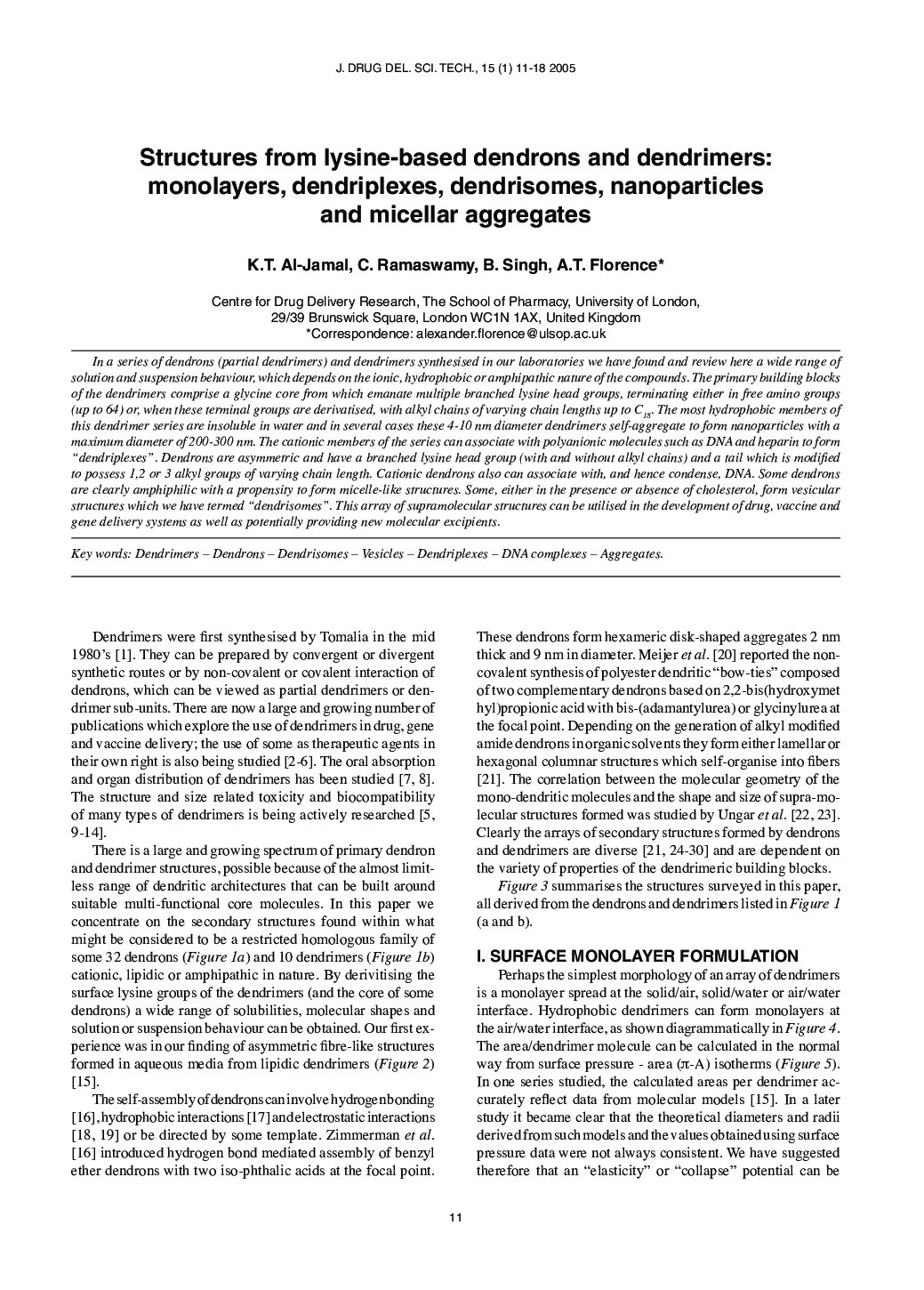| Article ID | Journal | Published Year | Pages | File Type |
|---|---|---|---|---|
| 8994282 | Journal of Drug Delivery Science and Technology | 2005 | 8 Pages |
Abstract
In a series of dendrons (partial dendrimers) and dendrimers synthesised in our laboratories we have found and review here a wide range of solution and suspension behaviour, which depends on the ionic, hydrophobic or amphipathic nature of the compounds. The primary building blocks of the dendrimers comprise a glycine core from which emanate multiple branched lysine head groups, terminating either in free amino groups (up to 64) or, when these terminal groups are derivatised, with alkyl chains of varying chain lengths up to C18. The most hydrophobic members of this dendrimer series are insoluble in water and in several cases these 4-10Â nm diameter dendrimers self-aggregate to form nanoparticles with a maximum diameter of 200-300Â nm. The cationic members of the series can associate with polyanionic molecules such as DNA and heparin to form “dendriplexes”. Dendrons are asymmetric and have a branched lysine head group (with and without alkyl chains) and a tail which is modified to possess 1,2 or 3 alkyl groups of varying chain length. Cationic dendrons also can associate with, and hence condense, DNA. Some dendrons are clearly amphiphilic with a propensity to form micelle-like structures. Some, either in the presence or absence of cholesterol, form vesicular structures which we have termed “dendrisomes”. This array of supramolecular structures can be utilised in the development of drug, vaccine and gene delivery systems as well as potentially providing new molecular excipients.
Related Topics
Health Sciences
Pharmacology, Toxicology and Pharmaceutical Science
Drug Discovery
Authors
K.T. Al-Jamal, C. Ramaswamy, B. Singh, A.T. Florence,
